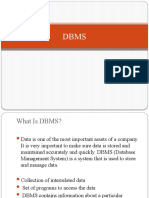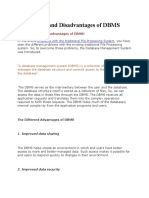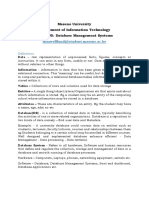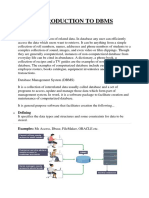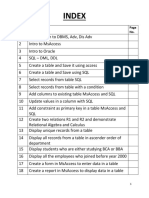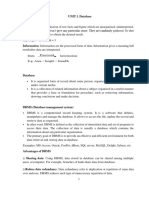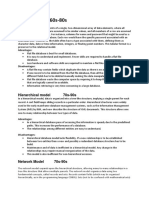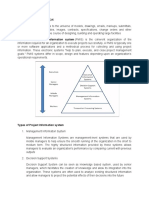0% found this document useful (0 votes)
4 views15 pagesDBMS
The document discusses the disadvantages of Database Management Systems (DBMS), highlighting increased costs, complexity, and performance issues. It also outlines the advantages of DBMS, such as data integration, abstraction, and security. Additionally, it describes different database models and fundamental concepts like fields, records, and entities.
Uploaded by
ambikaraut38Copyright
© © All Rights Reserved
We take content rights seriously. If you suspect this is your content, claim it here.
Available Formats
Download as PDF, TXT or read online on Scribd
0% found this document useful (0 votes)
4 views15 pagesDBMS
The document discusses the disadvantages of Database Management Systems (DBMS), highlighting increased costs, complexity, and performance issues. It also outlines the advantages of DBMS, such as data integration, abstraction, and security. Additionally, it describes different database models and fundamental concepts like fields, records, and entities.
Uploaded by
ambikaraut38Copyright
© © All Rights Reserved
We take content rights seriously. If you suspect this is your content, claim it here.
Available Formats
Download as PDF, TXT or read online on Scribd
/ 15

